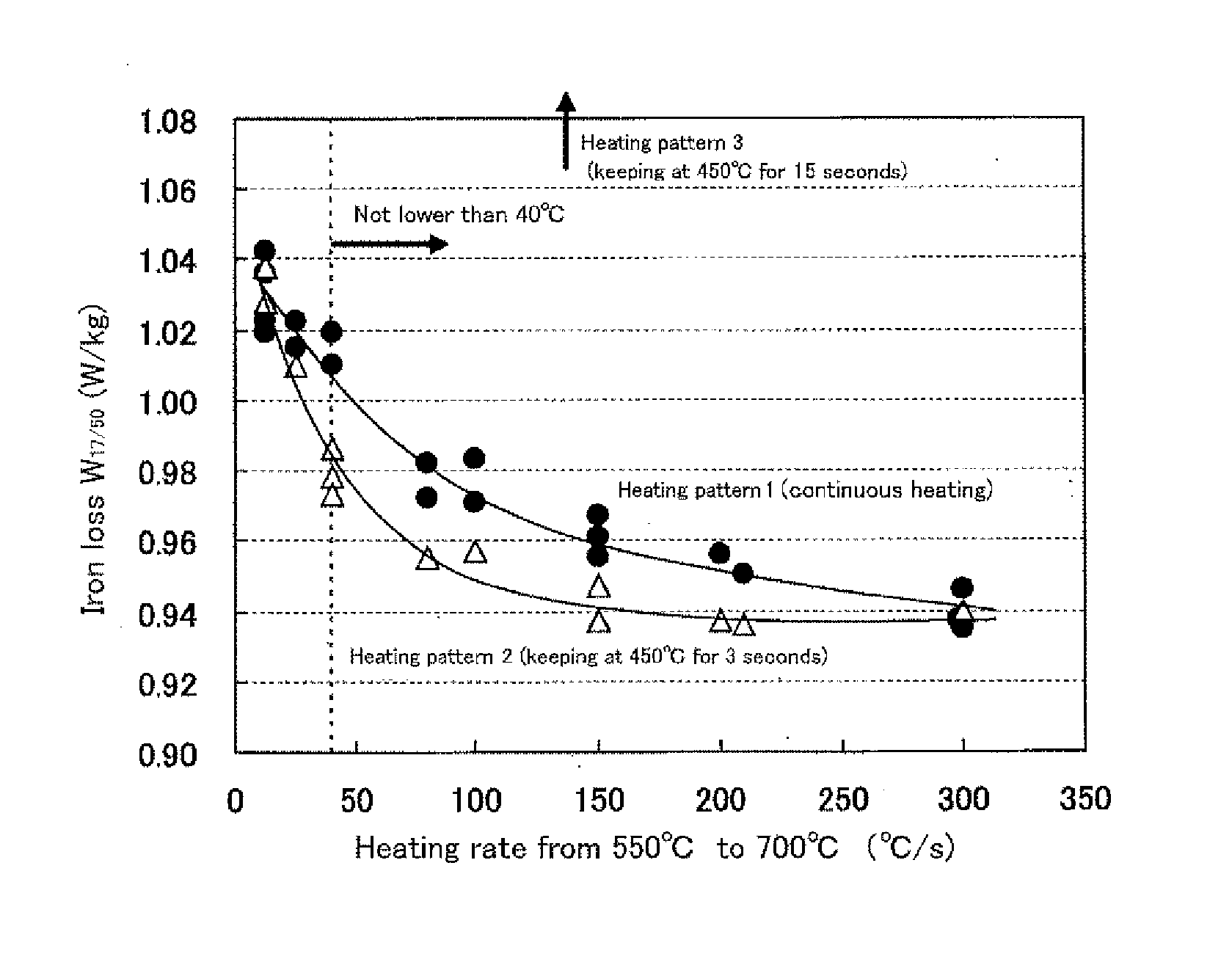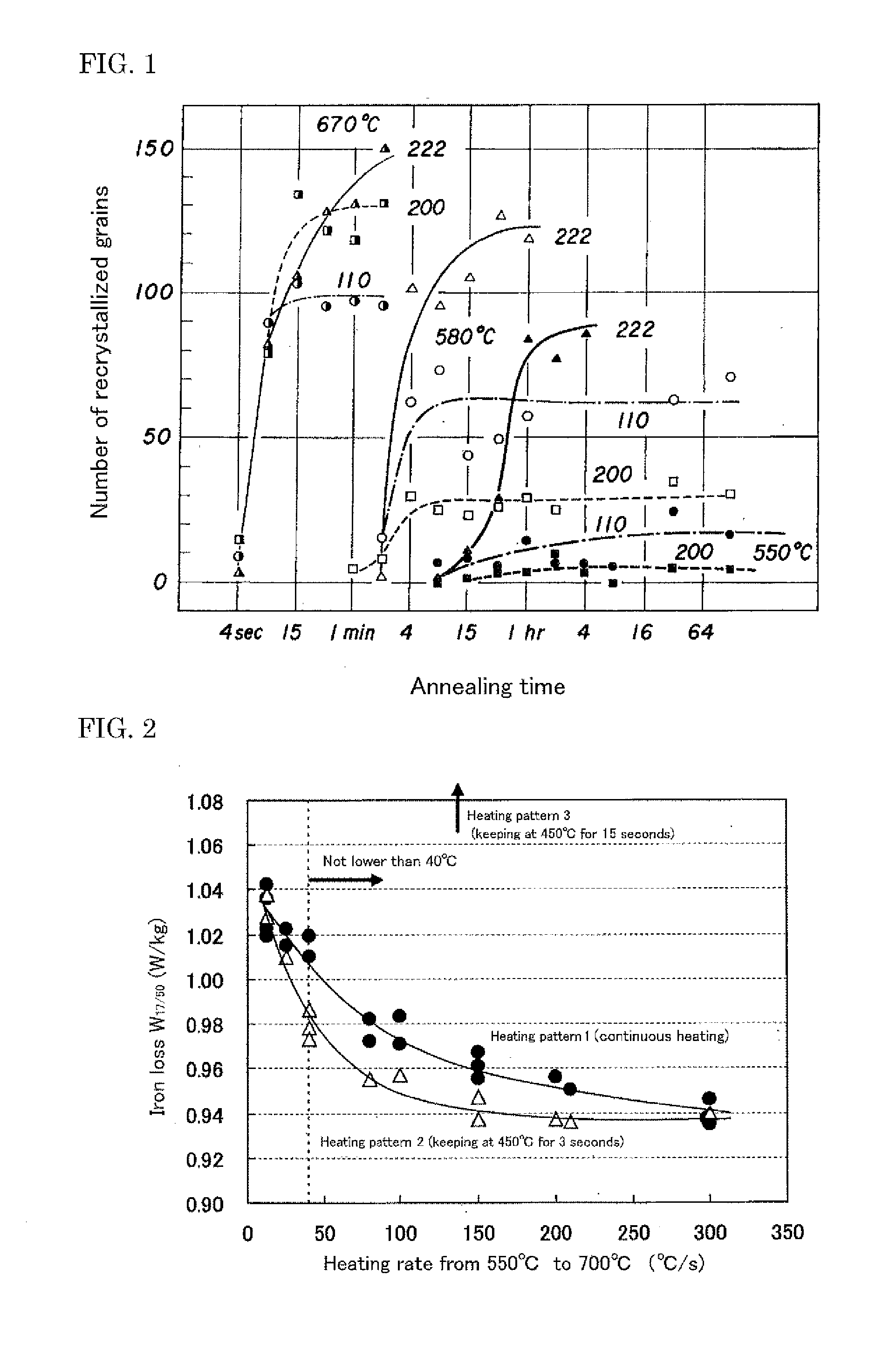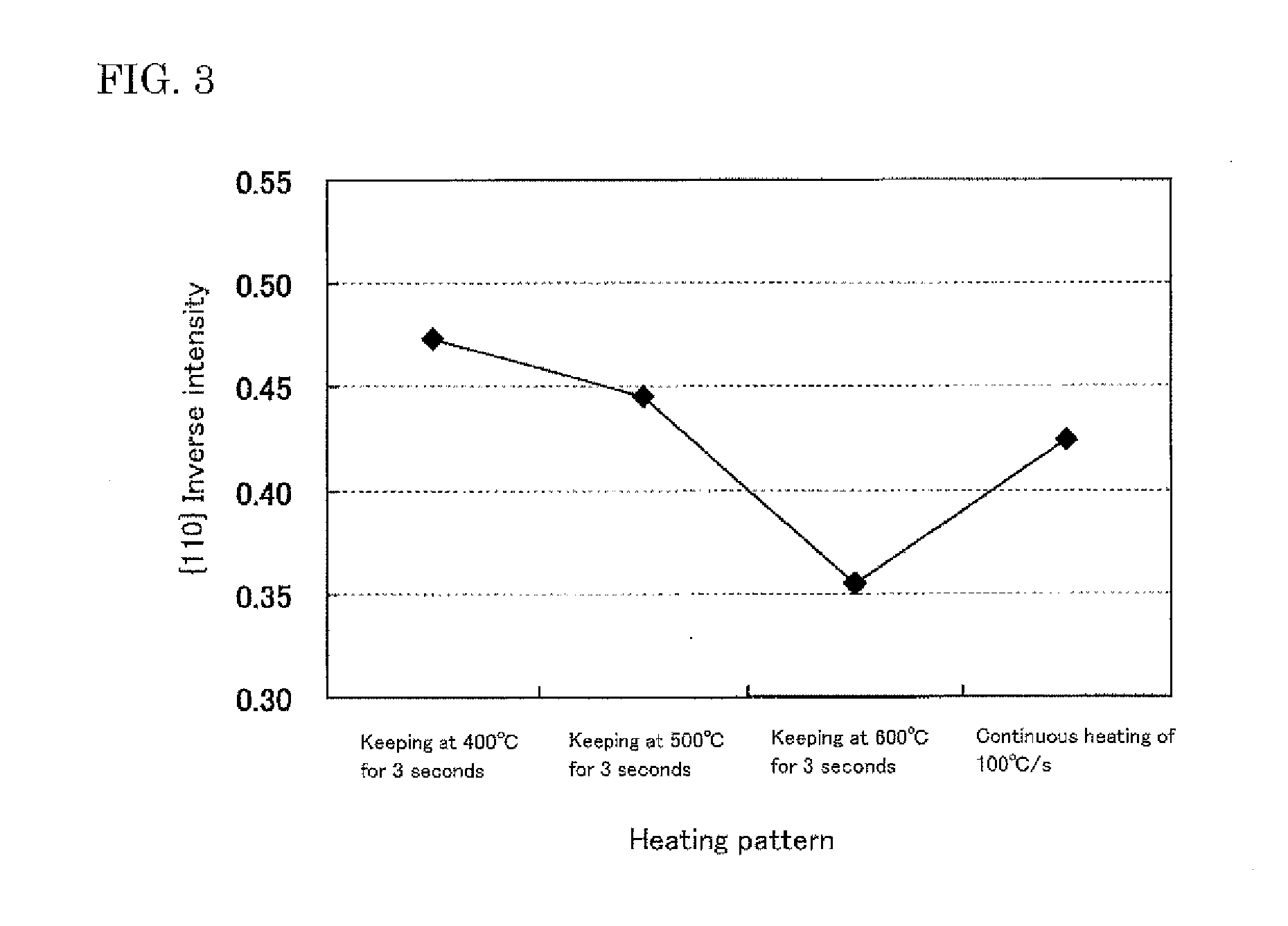Method of producing grain-oriented electrical steel sheet
a technology of electrical steel and grain-oriented steel, which is applied in the direction of heat treatment apparatus, magnetic bodies, furnaces, etc., can solve the problems of insufficient recrystallization, achieve high heating rate, easy and stable obtaining of grain-oriented electrical steel sheets, and improve the effect of heat dissipation
- Summary
- Abstract
- Description
- Claims
- Application Information
AI Technical Summary
Benefits of technology
Problems solved by technology
Method used
Image
Examples
experiment 1
[0021]A steel slab having a chemical composition comprising C: 0.05 mass %, Si: 3.4 mass %, Mn: 0.05 mass %, Al: 0.020 mass %, N: 0.0100 mass %, S: 0.0030 mass %, Se: 0.01 mass %, Sb: 0.01 mass %, Ti: 0.001 mass % and the remainder being Fe and inevitable impurities is hot rolled to form a hot rolled sheet, which is subjected to a hot band annealing and two cold rollings including an intermediate annealing of 1100° C. therebetween to form a cold rolled sheet having a thickness of 0.30 mm. Thereafter, 30 test specimens of L: 300 mm×C: 100 mm are cut out from a longitudinal and widthwise central part of the cold rolled sheet (coil).
[0022]Then, the test specimens are subjected to primary recrystallization annealing combined with decarburization annealing by heating the specimen to a temperature of 700° C. at various heating rates, heating to 800° C. at 30° C. / s and keeping in a wet hydrogen atmosphere for 60 seconds with an electric heating apparatus. Moreover, the heating in the prima...
experiment 2
[0025]Test specimens of the same size are taken out from the same positions of the cold rolled coil obtained in Experiment 1 and heated with an electric heating apparatus under a condition of continuously heating from room temperature to 700° C. at an annealing rate of 100° C. / s or a condition of keeping any temperature of 400° C., 500° C. and 600° C. on the way of the heating from room temperature to 700° C. at an annealing rate of 100° C. / s, and subjected to primary recrystallization annealing combined with decarburization annealing by heating from 700° C. to 800° C. at a heating rate of 30° C. / s and keeping in a wet hydrogen atmosphere for 60 seconds. For the primary recrystallization annealed sheets thus obtained is measured an inverse intensity by an X-ray diffractometry, from which it has been confirmed that {110} inverse intensity in case of keeping 400° C. or 500° C. is higher as compared to the case of keeping 600° C. or the case of continuously heating at 40° C. / s and is e...
example 1
[0059]A steel slab containing C: 0.04 mass %, Si: 3.3 mass %, Mn: 0.03 mass %, S: 0.008 mass %, Se: 0.01 mass %, Al: 0.03 mass %, N: 0.01 mass %, Cu: 0.03 mass % and Sb: 0.01 mass % is heated at 1350° C. for 40 minutes, hot rolled to form a hot rolled sheet of 2.2 mm in thickness, subjected to a hot band annealing at 1000° C. for 2 minutes and further to two cold rollings including an intermediate annealing of 1100° C.×2 minutes to form a cold rolled coil having a final thickness of 0.23 mm, which is subjected to a magnetic domain subdividing treatment by electrolytic etching to form linear grooves having a depth of 20 μm on the surface of the steel sheet in a direction of 90° with respect to the rolling direction.
[0060]Samples of L: 300 mm×C: 100 mm are taken out from longitudinal and widthwise central parts of the cold rolled coil thus obtained, which are subjected to a primary recrystallization annealing combined with decarburization annealing with an induction heating apparatus ...
PUM
| Property | Measurement | Unit |
|---|---|---|
| temperature | aaaaa | aaaaa |
| temperature | aaaaa | aaaaa |
| temperature | aaaaa | aaaaa |
Abstract
Description
Claims
Application Information
 Login to View More
Login to View More - R&D
- Intellectual Property
- Life Sciences
- Materials
- Tech Scout
- Unparalleled Data Quality
- Higher Quality Content
- 60% Fewer Hallucinations
Browse by: Latest US Patents, China's latest patents, Technical Efficacy Thesaurus, Application Domain, Technology Topic, Popular Technical Reports.
© 2025 PatSnap. All rights reserved.Legal|Privacy policy|Modern Slavery Act Transparency Statement|Sitemap|About US| Contact US: help@patsnap.com



